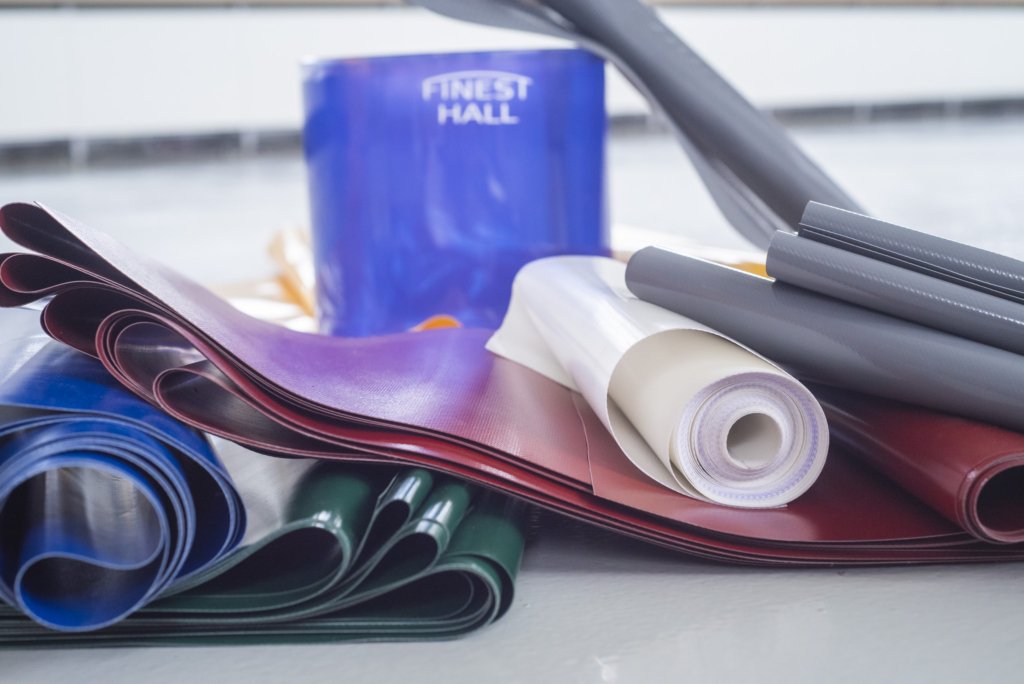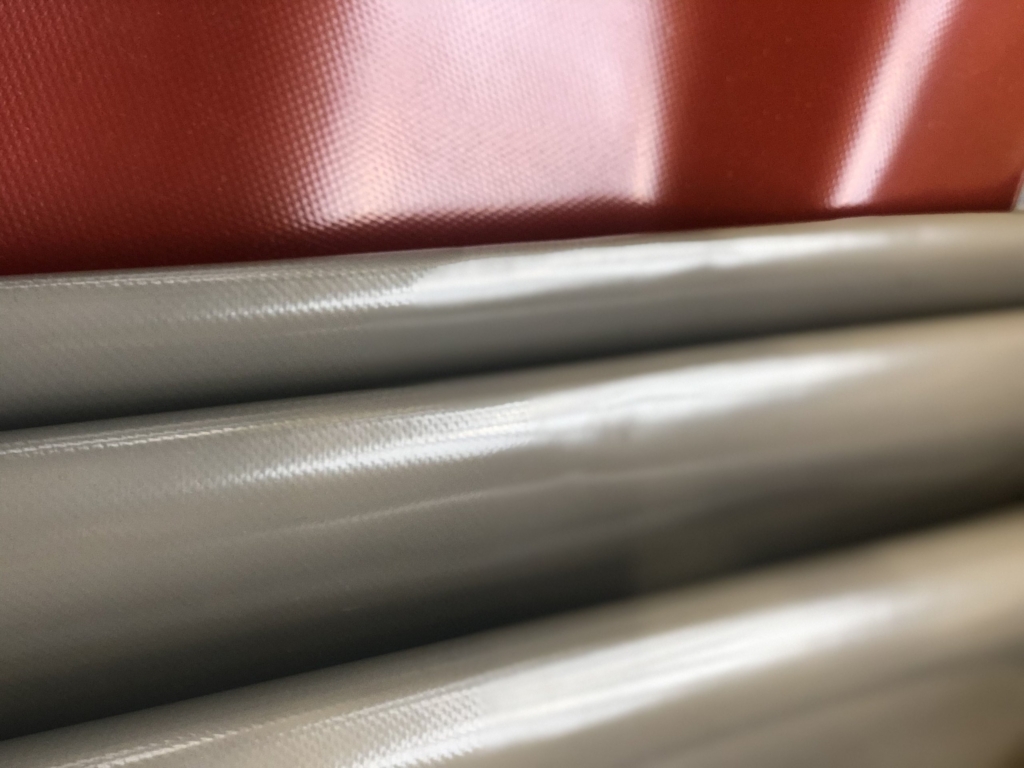Par Finest-Hall
If you are buying a PVC hall, then you are definitely faced with the problem of which PVC fabric to choose for your hall. PVCs come in many different thicknesses and uses. For example, when you search on the Internet, it is very difficult to find an answer to this question. The questions that might arise: which one is the right one, what should be the thickness of the PVC material, what are the special requirements, etc.

There are many different manufacturers of PVC halls, and in the same way, PVC fabrics for halls are also offered in different sizes, shapes, and forms.
Our climate should have a PVC coating material of at least 900g/m².
As these types of constructions are classified under TP3 fire safety, PVC must be varnished with fireproof varnish. Otherwise, there will be problems in obtaining a permit for the building. Tp3 Fire-safety class also requires that PVC material must have a fire-resistance certificate. Fire resistance is achieved either with varnish or with one component of PVC mass. Different manufacturers take different approaches. Truck tarpaulins, slurry tank covers, and other non-construction PVC coatings are made without fireproof varnish. None of them are the right fire-resistant coating for PVC halls, which is used as a warehouse.
The fabrics we use are lacquered on both sides. This ensures better UV resistance and colorfastness, as well as that the fabric stays cleaner and micro damage to the PVC mass is not as easy to occur. For example, moisture and dirt can steep into the base fabric and can damage it.

Halls are designed for a long time, so the material of the base fabric on which the PVC mass is applied must be UV-resistant, mold-resistant and also “low wick” (the fabric does not absorb moisture). More expensive fabrics are also anti-bacterial and anti-fungal.
PVC material is offered from 220g/m² to 1200g/m² and they all have their own purpose. Thinner PVC material is suitable for banners, curtains, load covers, wrestling mats, trampolines, etc. As different fabrics have different purposes, in addition to the weight per m² (thickness of PVC mass), the base fabric may also differ. Trucks have a fabric of 700-900 g/m², often varnished on one side and often without fire resistance. In cars, the fabric is still significantly thinner (easier to handle). In Scandinavia, rental “tarpaulins” are very popular. Those are used for temporary coating in both construction and agriculture, are 680 g/m², varnished on one side, and last in spite of heavy use, washing and repair for 10 + years.
To withstand Estonian climate, the temperature resistance of the PVC coating must be +70°C to -35°C .
Different manufacturers also guarantee the preservation of PVC color with different lengths, i.e. the color of the PVC mass (for example, from red to pink, etc.) will not be damaged by the sun and weather.
Frequently asked questions:
How to choose the right PVC coating for your PVC Hall? Always contact our sales department, who can help you with any questions.
What conditions should be considered when choosing PVC material? You need to think about the purpose for which you need the PVC fabric: PVC hall, car cover, or agricultural reasons.
What to consider when choosing a PVC cover for another purpose or for a truck tarpaulin, for example? Look at what the manufacturer offers, the truck’s tent has dozens of details besides PVC. Cheap solutions don’t conduct high quality.
Can you and how can PVC coating be purchased from FinEst-Hall for other purposes? Call us and we will find the best solution for you.
What does PVC coating consist of? On both sides, fabric is covered with an acrylic varnish, which is dirt repellent and prolongs the product’s life. The next layer is a coating, which gives the product the required protective features. Follows undercoat, which makes the surface adhere to the base fabric. The base fabric is the main element of the product, it gives the product the required strength.
What to do if the PVC coating needs repair/replacement?
We offer maintenance service for the hangars we install. We clean, repair and if necessary replace damaged PVC coverings. Our pledge is that our customers get assistance quickly. To ensure the safety of our projects, we take responsibility for the inspection, maintenance, and repair of our hangars.
How to maintain the PVC coating? Fix holes that seem insignificant immediately. When washing, wash with a product that you dare to wash yourself. Strong chemicals clean well, but without proper rinsing (preferably first with “shampoo”) destroys the varnish layer.
How often should the PVC coating be tightened/maintained? PVC hall should be maintained once a year, that will ensure a long life.